The Alluring Charm of Japanese Cuisine
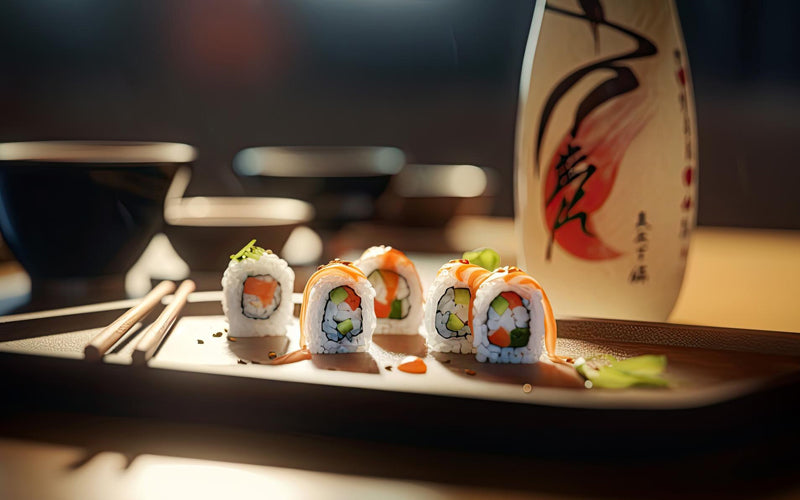
Japanese cuisine, revered worldwide for its exquisite flavors, meticulous preparation, and cultural significance, stands as a testament to culinary excellence. Rooted in centuries-old traditions and a deep reverence for ingredients, Japanese food extends far beyond mere sustenance.
It is an art form that reflects Japan's history, geography, and values.
The Essence of Japanese Cuisine: Washoku
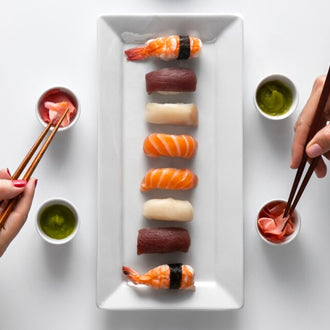
Washoku, the traditional cuisine of Japan, has been designated as an Intangible Cultural Heritage by UNESCO. It is known as the "Traditional Dietary Cultures of the Japanese" and embodies a culinary philosophy that emphasizes harmony, seasonality, and respect for ingredients. Washoku is not only about the food, but also encompasses cultural and social aspects, representing Japan's food culture and dietary traditions.
This culinary tradition encompasses a wide range of dishes, often showcasing staple ingredients such as rice, seafood, vegetables, tofu, and miso. Washoku places great importance on achieving a balance of flavors, colors, and textures within a meal, incorporating the principles of umami, the savory fifth taste.
The preparation and presentation of Washoku dishes require meticulous attention to detail and follow precise techniques. Additionally, the seasonal aspect is crucial as ingredients are carefully selected to reflect the natural rhythm of the seasons in Japan.
Washoku extends beyond just the food itself, encompassing various rituals, ceremonies, and dining etiquette. It highlights gratitude and respect for the bountiful gifts of nature and those involved in the food preparation process.
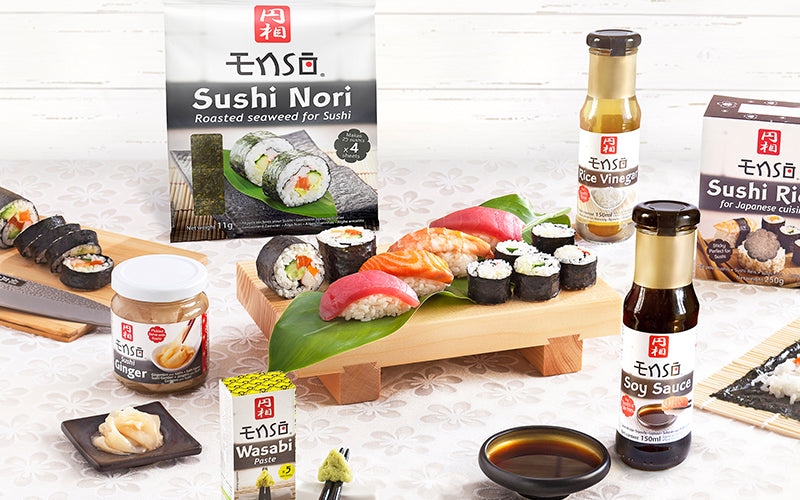
Balance of Flavors, Aromas, and Textures
Japanese cuisine is renowned for its unique and harmonious blend of flavors. It embraces the concept of umami by skillfully balancing salty, sweet, sour, and bitter tastes, which adds a delicious depth to dishes. In traditional Japanese cooking, ingredients are carefully selected and combined to complement to complement one another.
For instance, soy sauce enhances the natural flavors of seafood, while mirin adds subtle sweetness to dishes. The use of dashi, a broth made from kombu (seaweed) and bonito flakes, enriches many Japanese dishes with a rich umami flavor.
It’s not just a treat for the taste buds; Japanese food is also a delight for the sense of smell. The appetizing aromas of fresh sesame oil, aged vinegar, and various spices and herbs, the fragrance of simmering broths, or using ingredients like ginger, garlic, and green onions adds depth and complexity to the aromas of Japanese dishes.
Furthermore, Japanese cuisine is renowned for its diverse range of textures, spanning from the crispiness of tempura to the chewiness of udon noodles. Each dish, whether it’s the exact slicing of sashimi or the intricate assembly of sushi, showcases a diverse texture palette. Crunchy fresh vegetables add texture, while tofu contributes a silky smoothness, enhancing the enjoyment of every bite
The Art of preparation and presentation
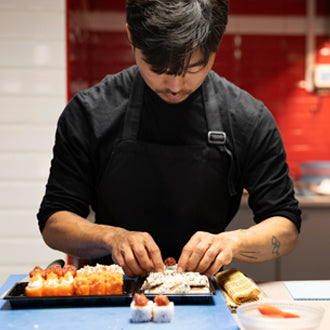
In Japanese cuisine, presentation is as important as taste. Japanese plating is more than just arranging food; it involves creating a visually pleasing arrangement that not only showcases the ingredients but also their inherent beauty. The incorporation of various shapes, textures, and decorative elements such as edible flowers and microgreens adds an element of visual intrigue to the dish.
Moreover, Japanese cuisine places great value on simplicity in presentation, allowing the natural beauty of each ingredient to shine with minimal embellishment. This approach ensures that the colors, textures, and flavors of the food remain the main focus. Often served on minimalist plates and bowls, this style of plating guarantees that the food takes center stage. The sleek design and refined elegance of Japanese tableware perfectly complement the simplicity of the presentation.
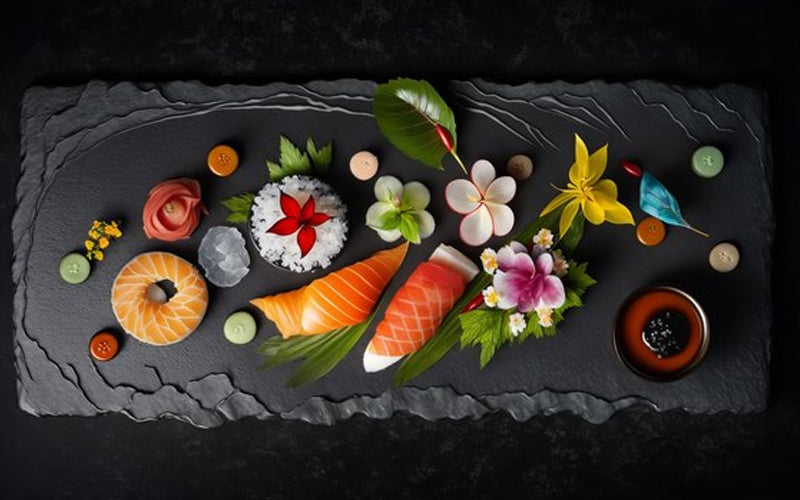
Popular Tastes from Japan
Sushi
Sushi is a renowned symbol of Japanese cuisine that holds a special place in the hearts of food enthusiasts worldwide. This culinary masterpiece, crafted with skill and precision, combines vinegared rice and exquisite seafood to create a harmonious blend of flavors and textures. Whether it is the classic nigiri or the delightful maki rolls, sushi showcases the mastery of traditional Japanese cooking techniques.
Ramen
Ramen, a beloved comfort food in Japan, has gained global popularity for its rich, flavorful broth and springy noodles. This humble yet complex dish varies across regions, each boasting its unique broth, noodle texture, and toppings. From the robust tonkatsu to the delicate shoyu, ramen embodies diversity and depth within a single bowl.
Kaiseki
Kaiseki, a refined and artistic meal, captures the true essence of Japanese gourmet cuisine. The traditional Kaiseki meal typically comprises of nine courses, although variations can be found with anywhere from six to 15 courses. Deeply rooted in the principles of Zen Buddhism, Kaiseki embodies mindfulness and a deep appreciation for the natural world. By skillfully combining seasonal ingredients, textures, and flavors, Kaiseki aims to create a dining experience that is truly exquisite. Every dish is painstakingly crafted to tell a unique story that reflects both nature and culture.
Umami: Fermentation and Seasoning

Umami, frequently referred to as the fifth flavor, holds significant importance in Japanese cuisine. Traditional Japanese dishes are enhanced by fermented condiments such as miso, soy sauce, and mirin, which impart a profound and intricate taste.
Moreover, the inclusion of ingredients like dashi, a broth made from kombu seaweed and bonito flakes, heightens the flavors and contributes to the characteristic umami-rich essence that is synonymous with Japanese cuisine.
Tempura
Tempura is a prime example of Japan's culinary expertise, with its delicate balance of light, crispy batter and fresh seafood and vegetables. This delectable dish showcases the meticulous frying technique that results in a perfect texture and taste.
In Kaiseki cuisine, tempura frequently takes center stage as part of a multi-course meal, highlighting its refined and precise preparation. The combination of the golden, crispy exterior and the succulent interior makes tempura a true testament to Japan's culinary finesse.
Japanese cuisine is captivating not only because of its alluring tastes and careful preparation, but also due to its embodiment of tradition, culture, and respect for nature's abundance.
From the elegant artistry of Kaiseki to the comforting warmth of a bowl of ramen, Japanese gastronomy takes us on an immersive journey into a realm where food goes beyond sustenance and transforms into a meaningful cultural experience.

